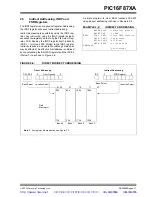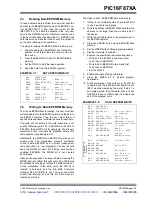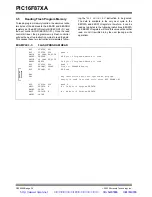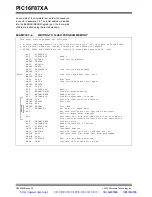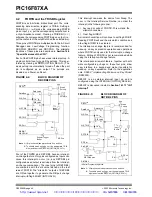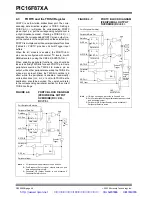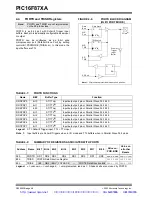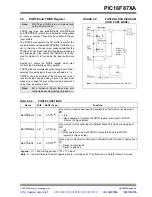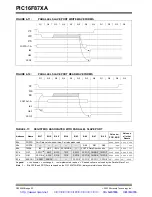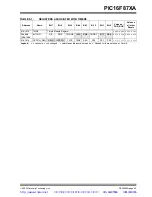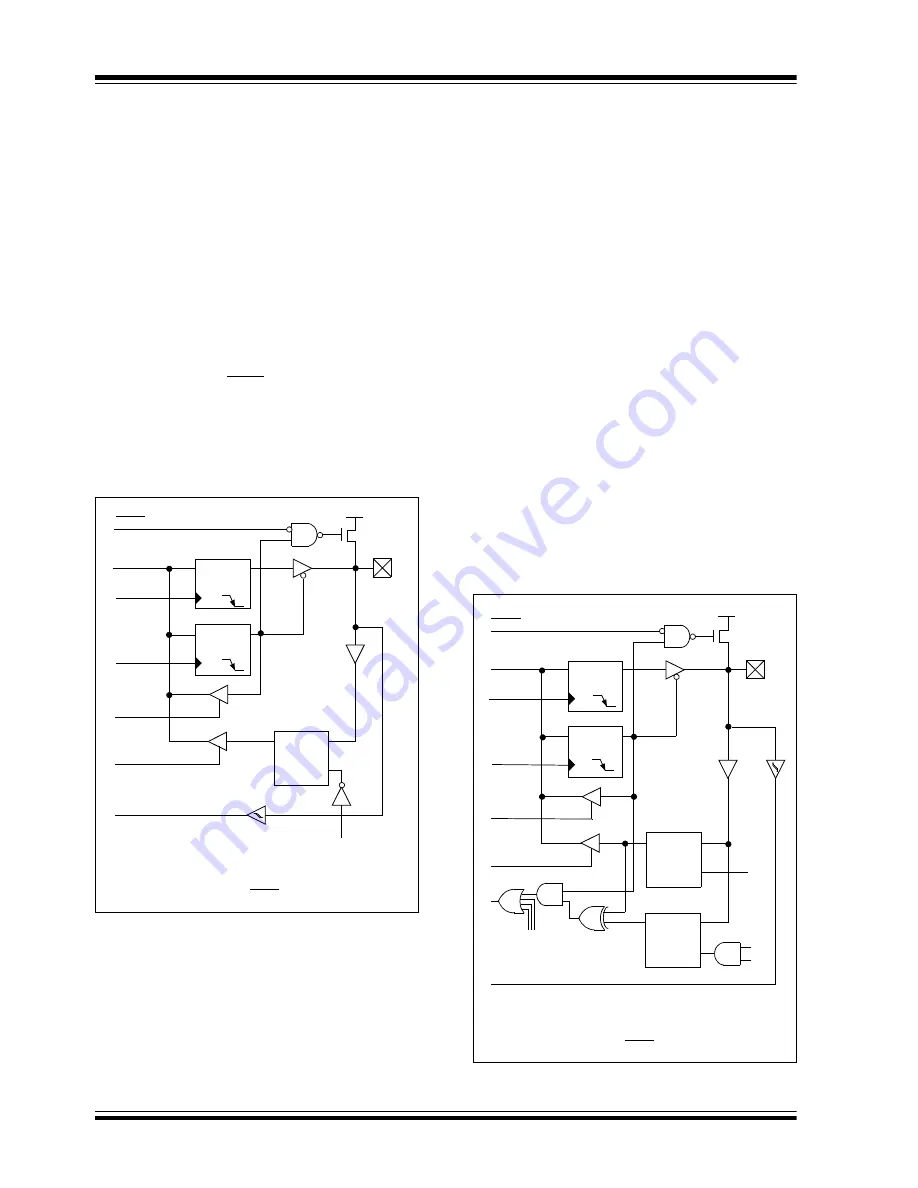
PIC16F87XA
DS39582B-page 44
2003 Microchip Technology Inc.
4.2
PORTB and the TRISB Register
PORTB is an 8-bit wide, bidirectional port. The corre-
sponding data direction register is TRISB. Setting a
TRISB bit (=
1
) will make the corresponding PORTB
pin an input (i.e., put the corresponding output driver in
a High-Impedance mode). Clearing a TRISB bit (=
0
)
will make the corresponding PORTB pin an output (i.e.,
put the contents of the output latch on the selected pin).
Three pins of PORTB are multiplexed with the In-Circuit
Debugger and Low-Voltage Programming function:
RB3/PGM, RB6/PGC and RB7/PGD. The alternate
functions of these pins are described in Section 14.0
“Special Features of the CPU”.
Each of the PORTB pins has a weak internal pull-up. A
single control bit can turn on all the pull-ups. This is per-
formed by clearing bit RBPU (OPTION_REG<7>). The
weak pull-up is automatically turned off when the port
pin is configured as an output. The pull-ups are
disabled on a Power-on Reset.
FIGURE 4-4:
BLOCK DIAGRAM OF
RB3:RB0 PINS
Four of the PORTB pins, RB7:RB4, have an interrupt-
on-change feature. Only pins configured as inputs can
cause this interrupt to occur (i.e., any RB7:RB4 pin
configured as an output is excluded from the interrupt-
on-change comparison). The input pins (of RB7:RB4)
are compared with the old value latched on the last
read of PORTB. The “mismatch” outputs of RB7:RB4
are OR’ed together to generate the RB port change
interrupt with flag bit RBIF (INTCON<0>).
This interrupt can wake the device from Sleep. The
user, in the Interrupt Service Routine, can clear the
interrupt in the following manner:
a)
Any read or write of PORTB. This will end the
mismatch condition.
b)
Clear flag bit RBIF.
A mismatch condition will continue to set flag bit RBIF.
Reading PORTB will end the mismatch condition and
allow flag bit RBIF to be cleared.
The interrupt-on-change feature is recommended for
wake-up on key depression operation and operations
where PORTB is only used for the interrupt-on-change
feature. Polling of PORTB is not recommended while
using the interrupt-on-change feature.
This interrupt-on-mismatch feature, together with soft-
ware configurable pull-ups on these four pins, allow
easy interface to a keypad and make it possible for
wake-up on key depression. Refer to the application
note, AN552, “Implementing Wake-up on Key Stroke”
(DS00552).
RB0/INT is an external interrupt input pin and is
configured using the INTEDG bit (OPTION_REG<6>).
RB0/INT is discussed in detail in Section 14.11.1 “INT
Interrupt”.
FIGURE 4-5:
BLOCK DIAGRAM OF
RB7:RB4 PINS
Data Latch
RBPU
(2)
P
V
DD
Q
D
CK
Q
D
CK
Q
D
EN
Data Bus
WR Port
WR TRIS
RD TRIS
RD Port
Weak
Pull-up
RD Port
RB0/INT
I/O pin
(1)
TTL
Input
Buffer
Schmitt Trigger
Buffer
TRIS Latch
Note 1: I/O pins have diode protection to V
DD
and V
SS
.
2: To enable weak pull-ups, set the appropriate TRIS
bit(s) and clear the RBPU bit (OPTION_REG<7>).
RB3/PGM
Data Latch
From other
RBPU
(2)
P
V
DD
I/O pin
(1)
Q
D
CK
Q
D
CK
Q
D
EN
Q
D
EN
Data Bus
WR Port
WR TRIS
Set RBIF
TRIS Latch
RD TRIS
RD Port
RB7:RB4 pins
Weak
Pull-up
RD Port
Latch
TTL
Input
Buffer
ST
Buffer
RB7:RB6
Q3
Q1
Note 1: I/O pins have diode protection to V
DD
and V
SS
.
2: To enable weak pull-ups, set the appropriate TRIS
bit(s) and clear the RBPU bit (OPTION_REG<7>).
In Serial Programming Mode
http://www.xinpian.net
提供单片机解密、IC解密、芯片解密业务
010-62245566 13810019655


